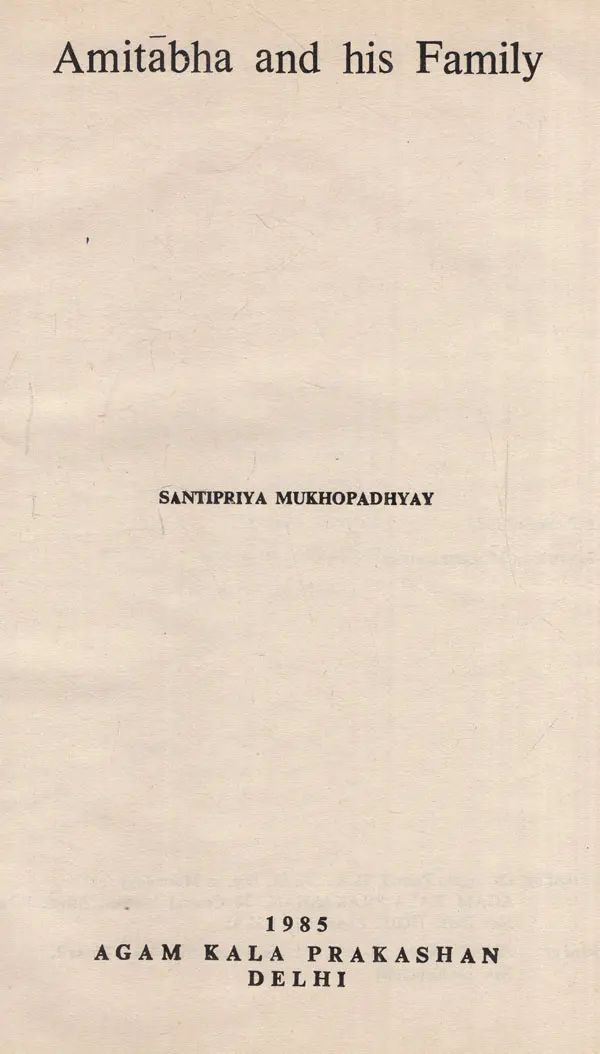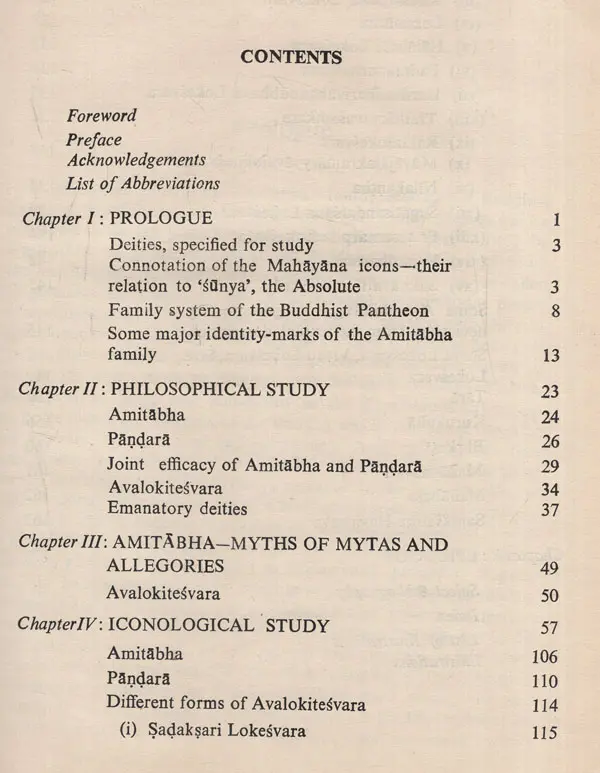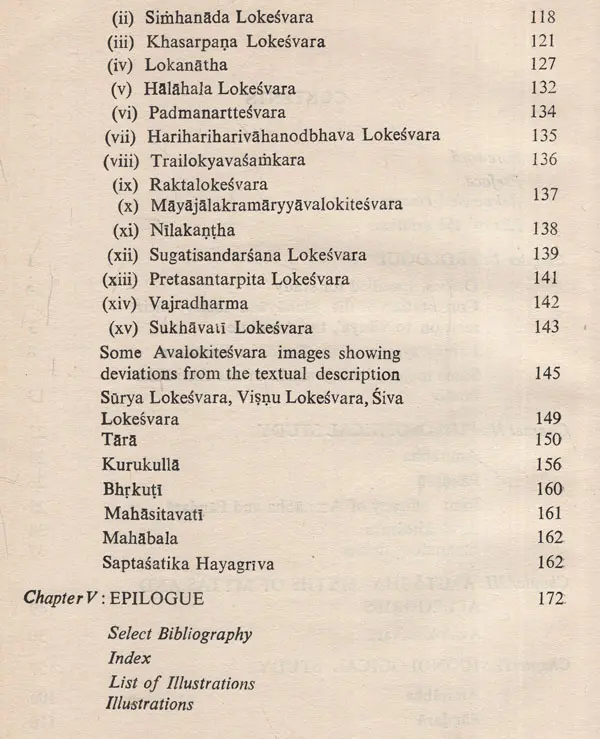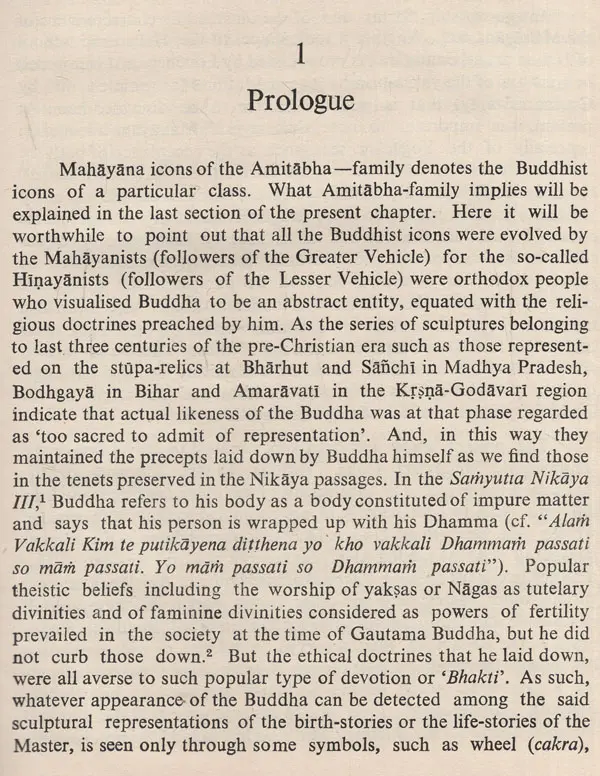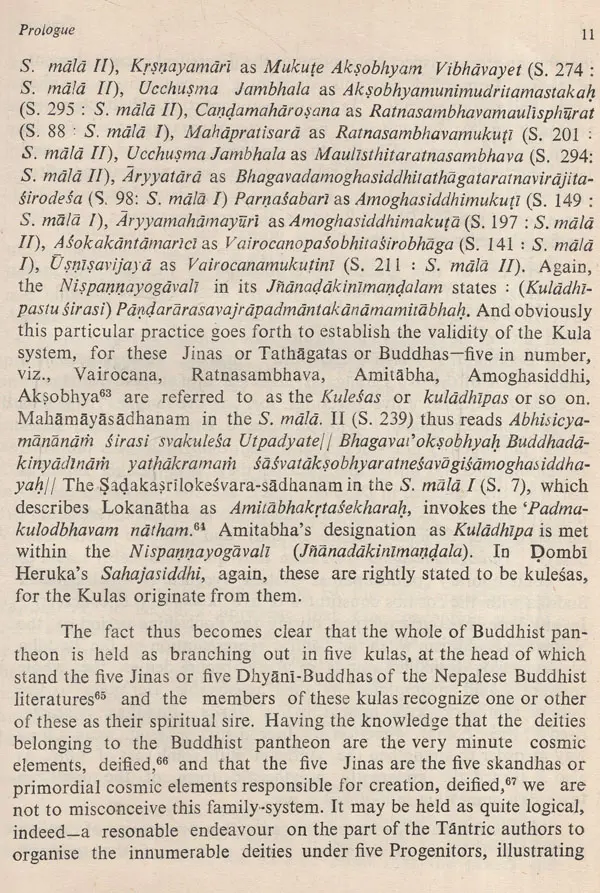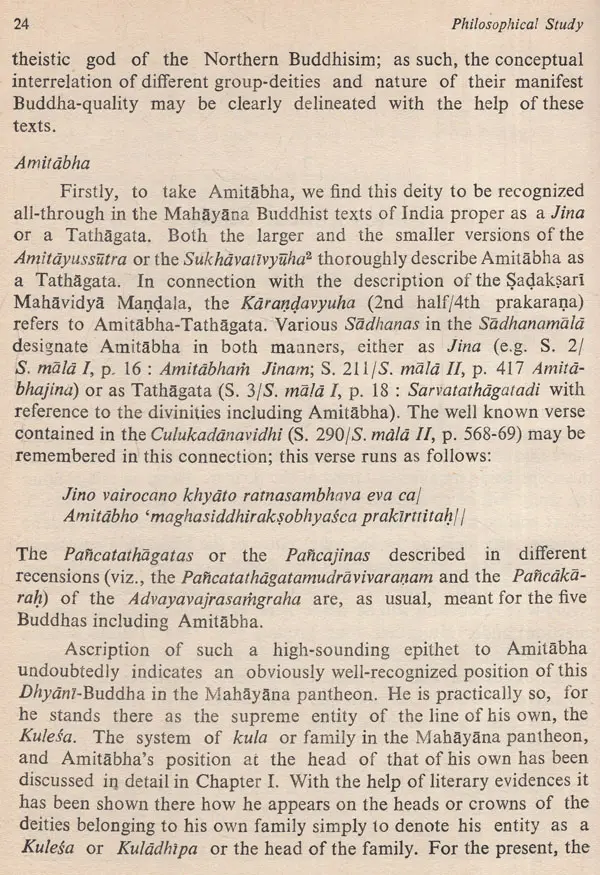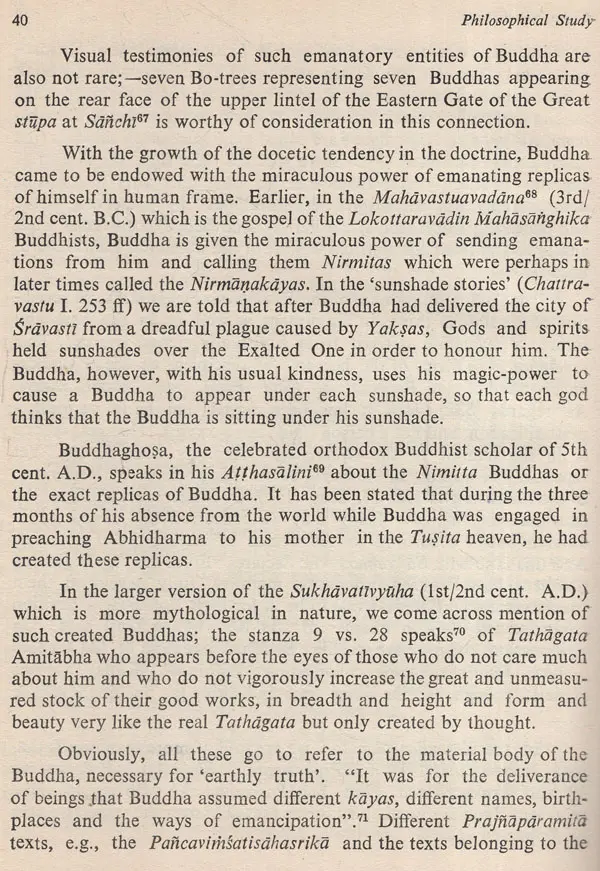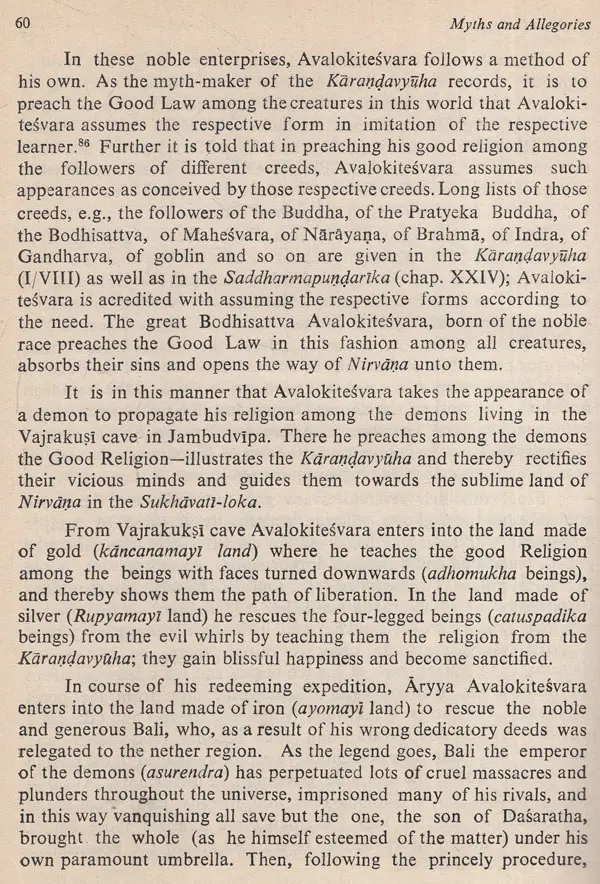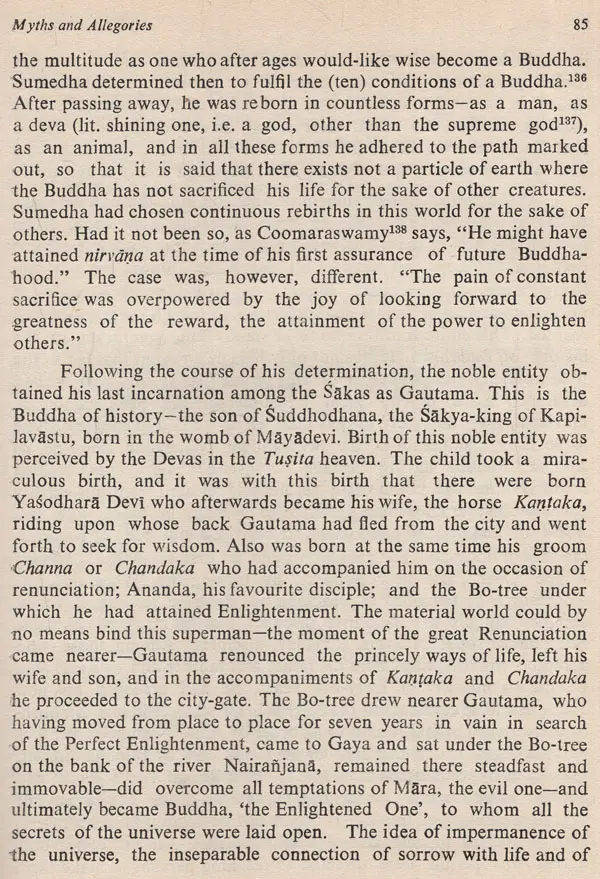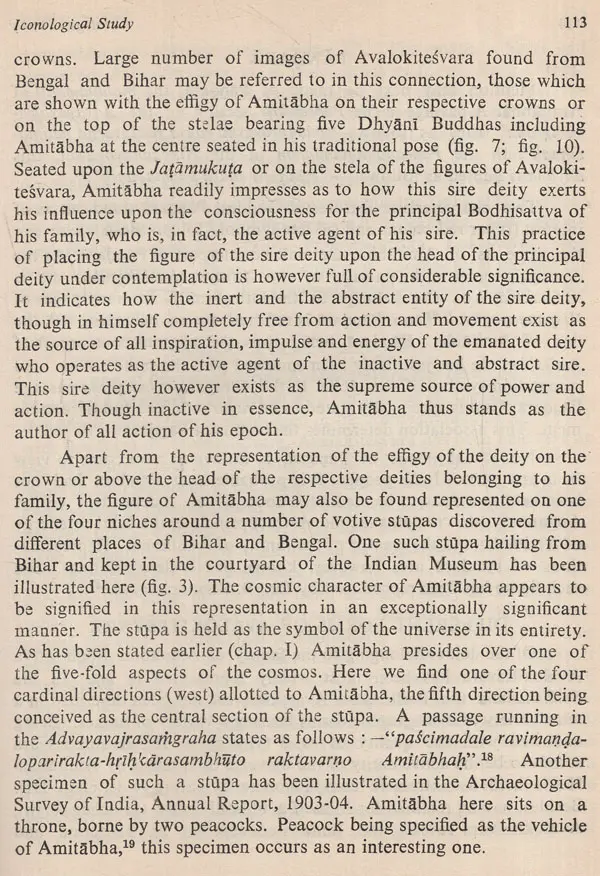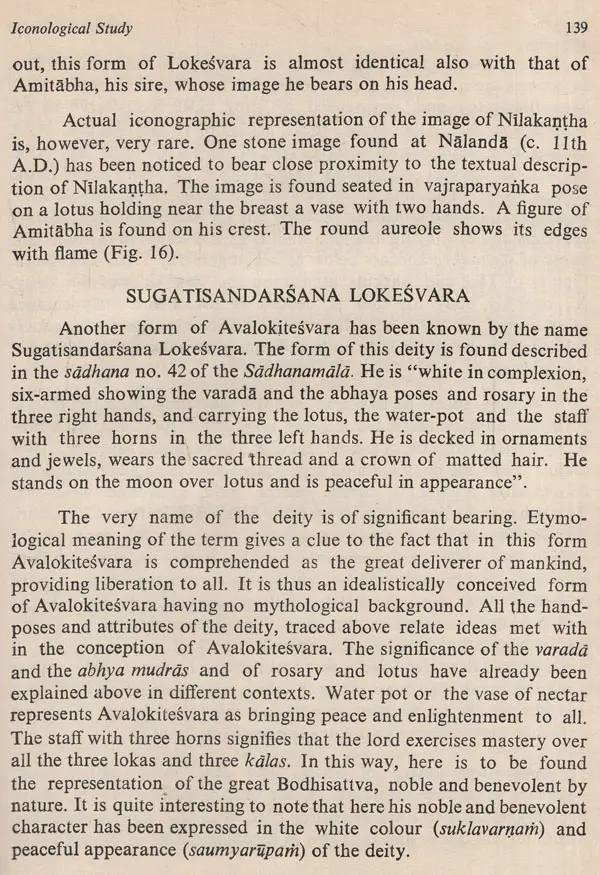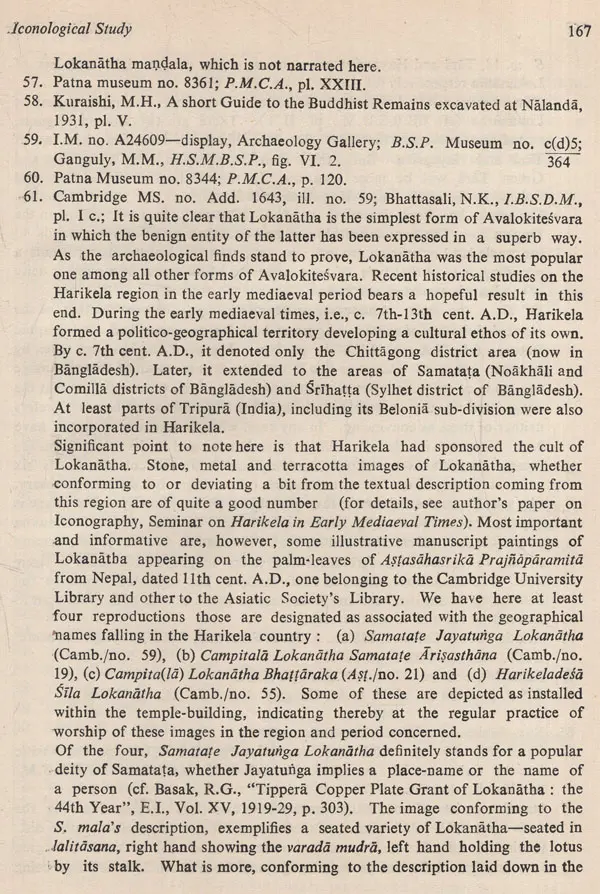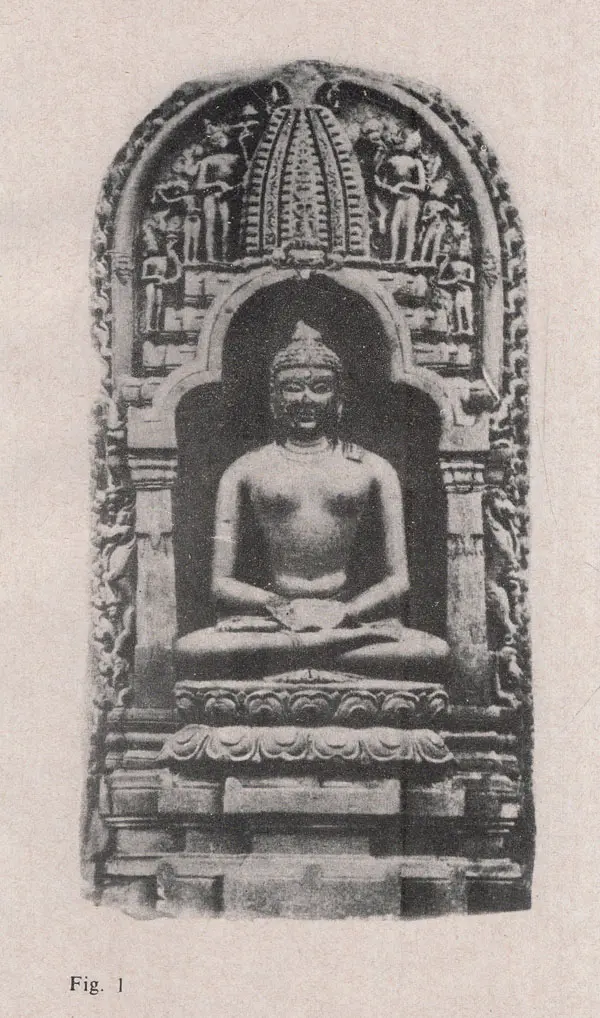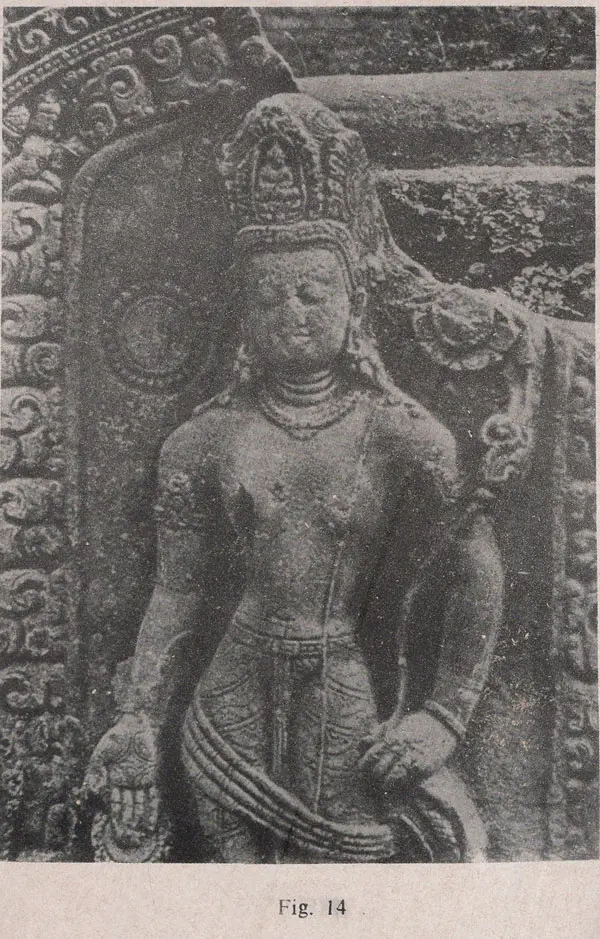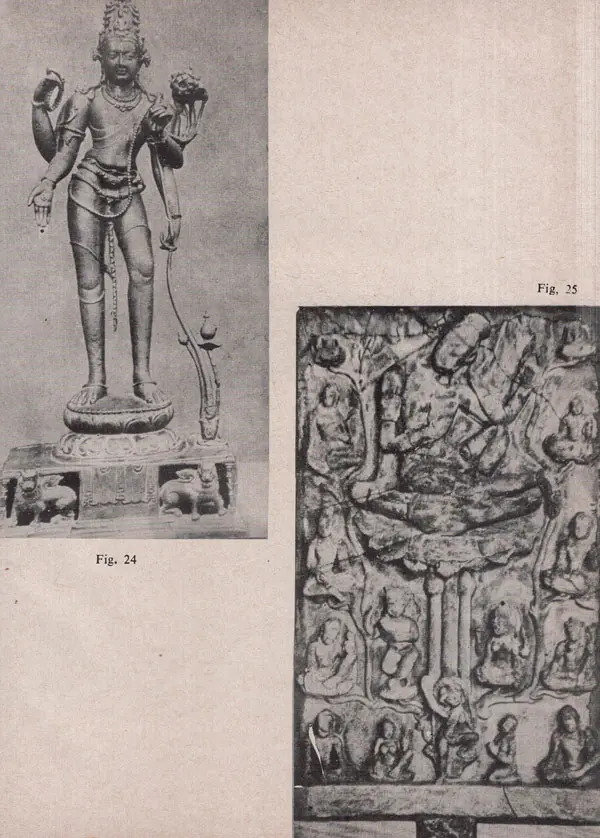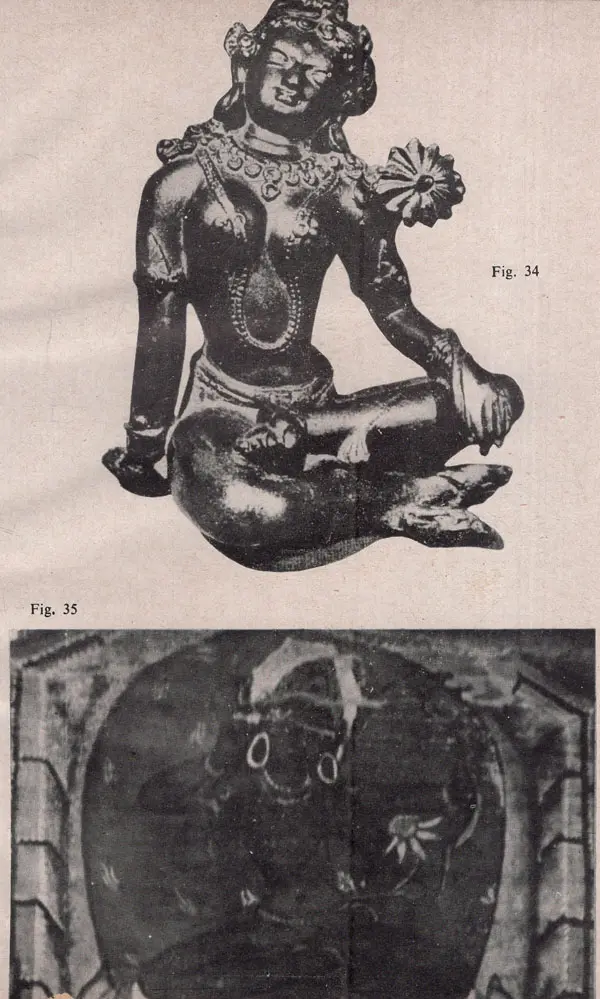
Amitabha and His Family (An Old & Rare Book)
Book Specification
| Item Code: | UAQ056 |
| Author: | Santi Priya Mukhopadhyay |
| Publisher: | Agam Kala Prakashan, Delhi |
| Language: | English |
| Edition: | 1985 |
| Pages: | 230 |
| Cover: | HARDCOVER |
| Other Details | 9.80 X 7.50 inch |
| Weight | 640 gm |
Book Description
Some of the outstanding results obtained in the study are focussing light on several problems of Buddhism, e.g., family-system in the Buddhist Pantheon and specifications of the Amitabha family in Ch. I; (b) Trip ple-Body of the Buddha and its corelation with dhyani Buddha and Bodhisattva and manusi Buddha in Ch. II; (c) Mythology on Amitabha, theological development of Amitabha and Avalokitesvara in Ch. III, an aesthetic appreciation of the actual specimens in perspective of the conceptual background, a survey on images of Avalo kitesvara not tallying with the sastric descriptions in Ch. IV.
The emphasis has been laid on the study of the socio-historical perspective of the images. The critical apparatus used consists of original source-materials, both published and unpublished.
Copious textual citations and visual documentation in the form of Thirty-eight illustrations of images lend authenticity to the volume which doubtless is a significant scholarly contribution to the iconological study of Indian art.
Santipriya Mukhopadhyay, who had obtained a first class in her M.A. has proved herself a very fit person to undertake a study of this very complicated yet meaningful domain of Indian philosophical and aesthetic exploration which she has undoubtedly accomplished with considerable credit and distinction.
History of Buddhism is a compact and longdrawn one. Gautama, the historical Buddha, stands unique as a living personality in the whole range of Buddhism-right upto about 11th-12th cents. A.D. in Indian subcontinent. During his life-time Gautama Buddha acted as the Great Propounder, Preacher and Master. The influence of Buddha after his death, however, became more effective and impressive as the vast source-material revealed in literary texts and archaeological remains stand to prove. From a mortal man Gautama had been transformend into the moral and ethical law, i.c. dharma propounded by himself, next he became the superman, Mahapuruşa who had lived his earthly life in order to carry on the divine sport; there arose a docetic tendency in Buddhism; mythological concept began to grow around the religious figure of the Buddha and came to be widely recognized-the figure ultimately stood for a deity evoking devotion and adoration of the devotees (by 1st-2nd cents. A.D.). He is next found to be realized in the form of an image, commanding upon the union (yoga) of the two-fold soul (Jivätman and Paramatman) of the devotees (by 3rd-4th cents. A.D.). Soon these images came to be used as instruments (yantra) helping meditation that is sadhana and siddhi (from 7th-8th cents. onwards). Obviously Tantric affiliation was the leading contributory factor behind this development. The result was formulation of diversified iconographic formula and their usual representations in sculpture and painting. The one Buddha became many with the passage of time.
**Contents and Sample Pages**
